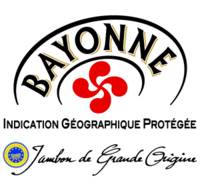Case 2: Ham of Bayonne

The Consortium of Ham of Bayonne plays a key role in the governance of the chain particularly in the organization of the chain, its management and inter-professionnal relations between the members. Various relations can be found along the chain: first of all there is the relation between the consortium and the members and secondly the relations between members per stage:
- feed producers - pig farmers
- pig farmer - pig producer group
- pig famer - slaughterhouse
- slaughterhouses - processors
- processors - salt producer
For the Ham of Bayonne supply chain relationships between actors of an economic nature. Usually, the nature of contractual relationships is a client-supplier relationship, taking into account the quality specification of Ham of Bayonne. Each actor in the supply chain must be supplied by an officially approved actor. For example, a pig producer must supply its feed stock from an approved feed producer.
There are relationships between the supply chain of Ham of Bayonne and the consortium organization with respect to global support of the chain, control/ monitoring , training, investment, etc.
Players of the chain must be a member of the Consortium by written agreement. New members are admitted after approval of the board of the Consortium of Ham of Bayonne. Consequently, members agree with the requirements, rules, and specification of PGI Ham of Bayonne and with a financial contribution.
Below, information on the governance relationships between feed producer and pig farmers is shown.
|
Purpose of exchange: single transaction versus long-term relationship |
Nature of communication: anonymous versus firm to firm |
Formality of exchange: formal versus informal |
Type of contract: classic (closed) versus relational (open) |
| 50 % of pig feed is provided by feed producers that have a licence to produce animal feed for the Ham of Bayonne supply chain. | Business to business communication | Formal exchange, needed for traceability |
Closed contract as regard to PGI Ham of Bayonne specification for animal feed concerning its composition. Example: animal feed based on cereals. Anabolic steroids, meat and bone flour, and fish meal are forbidden |
Below, information of the governance relationships between pig farmer and the pig producer group is shown.
|
Purpose of exchange: single transaction versus long-term relationship |
Nature of communication: anonymous versus firm to firm |
Formality of exchange: formal versus informal |
Type of contract: classic (closed) versus relational (open) |
| 90% of the farmers are members of an economic organization: producer group | Business to business communication: meetings, information exchange on production, technical assistance, control, sanitary and hygiene, and market development | Formal exchange |
written contract / agreement: Contains rules for membership, requirements on pig production (sanitary, traceability, etc.), financial contribution, and payment of the financial incentive according to the inter-professionnal contract of Ham of Bayonne |
An inter-professional contract exists between pig farmer - slaughterhouse / processor. It is a tripartite contract:
- Processors pay to slaughterhouses financial incentive for pig farmers. The incentive is included in the price of certified fresh ham
- Slaughterhouses pay back the incentive to producer groups
- Producer groups repay the financial incentive to their pig farmer members
Below, information on the governance relationships between pig producer and slaughterhouse is shown.
Purpose of exchange: |
Nature of communication: |
Formality of exchange: |
Type of contract: |
|
Slaughterhouses must be supplied by farmers that produce pigs according to specifications of Ham of Bayonne |
Business-to-business communication , respect of specification (pig from Aquitaine region, heavy pork, respect of animal welfare during transport, etc.) |
Formal exchange |
Closed contract in regard to Ham of Bayonne requirements with inter-professional agreement – specific contract which concerns the payment of financial incentives for each heavy pig slaughtered according to PGI Ham of Bayonne specifications. |
|
Below, information on the governance relationships of the exchange between slaughterhouse and processor is shown
Purpose of exchange: |
Nature of communication: |
Formality of exchange: |
Type of contract: |
Approved slaughterhouse provides fresh ham to processors |
Firm-to-firm communication , commitment to IGP ham of Bayonne specification (pig origin: from Aquitaine region from approved producer, traceability, tattoo of ham) |
Formal exchange |
Closed contract in regard to bayonne Ham requirements ( example: specific cut of fresh ham for Bayonne ham), with |
Below, information on the governance relationships between processor and salt producer firstly, and secondly, between processor and retailer is shown.
Purpose of exchange: |
Nature of communication: |
Formality of exchange: |
Type of contract: |
The two salt producers in Adour basin region provide salt to the processor for Ham of Bayonne |
Business-to-business communication |
Formal exchange |
Closed contract concerning the type of salt: the salt used for Ham of Bayonne is a special salt from Adour Bassin region |
Purpose of exchange: |
Nature of communication: |
Formality of exchange: |
Type of contract: |
Annualy contracts about referencing product ( with Super and Hypermarket) Processors proposes Ham of Bayonne to retailer which can be sold under their own brand or under retailer brand in addition to the label PGI Ham of Bayonne |
Business to business communication |
Formal exchange |
Closed contract about : price, volume |